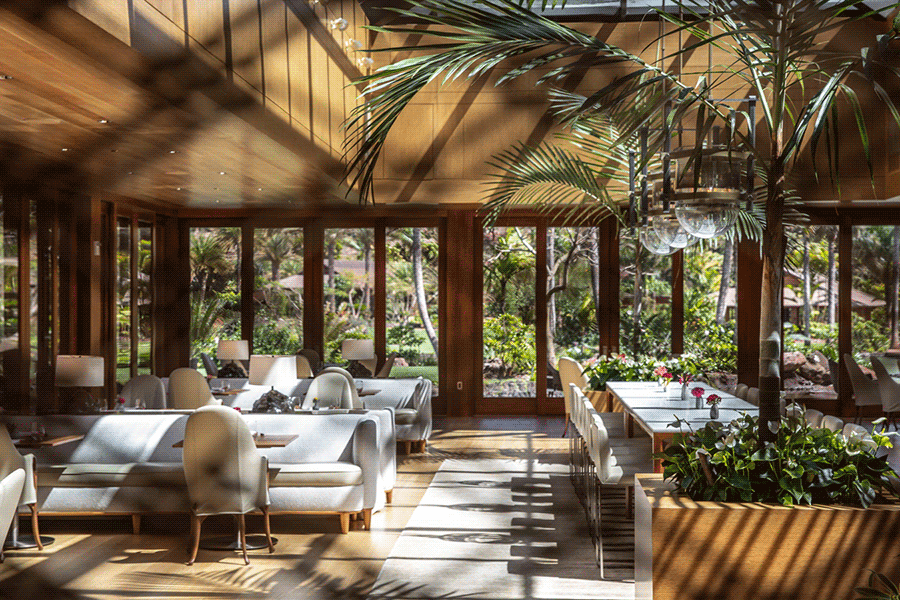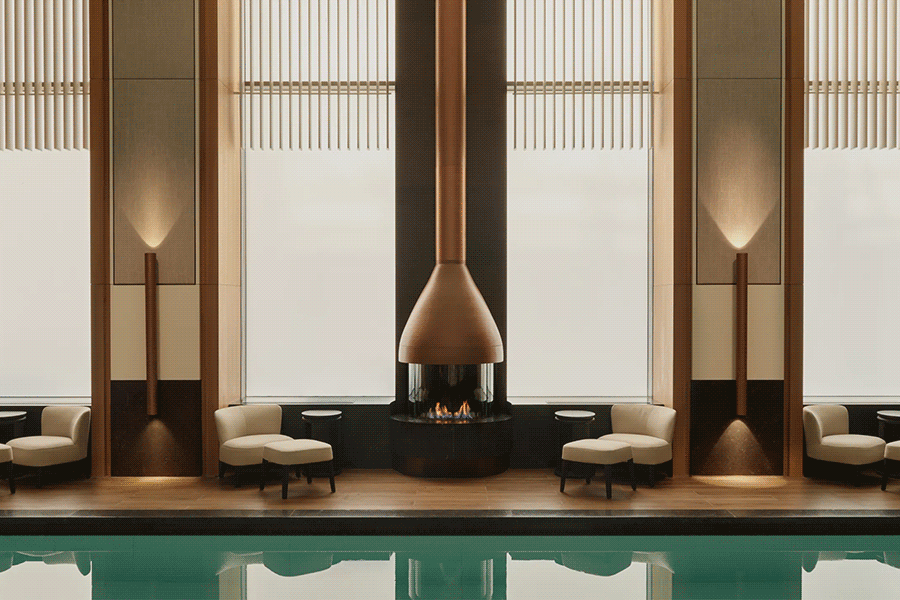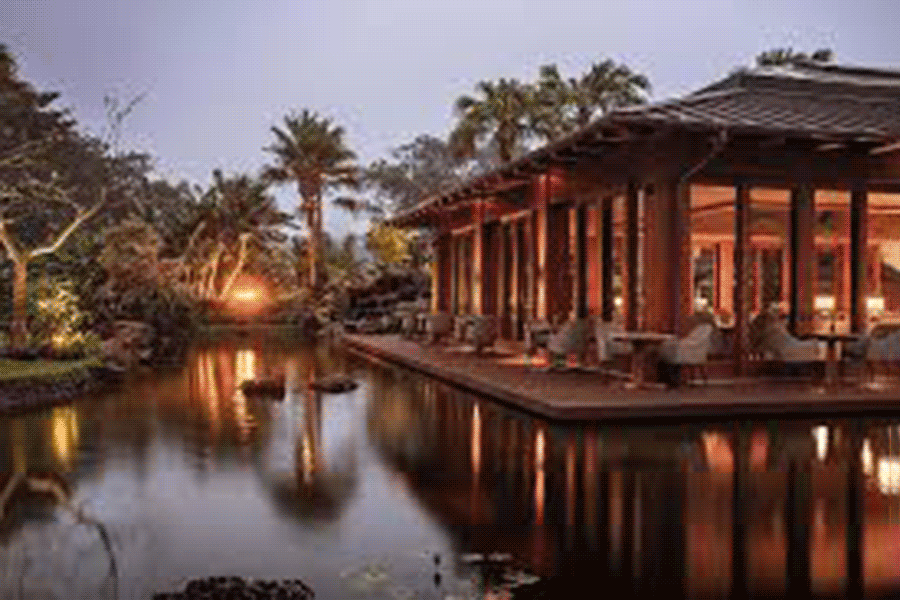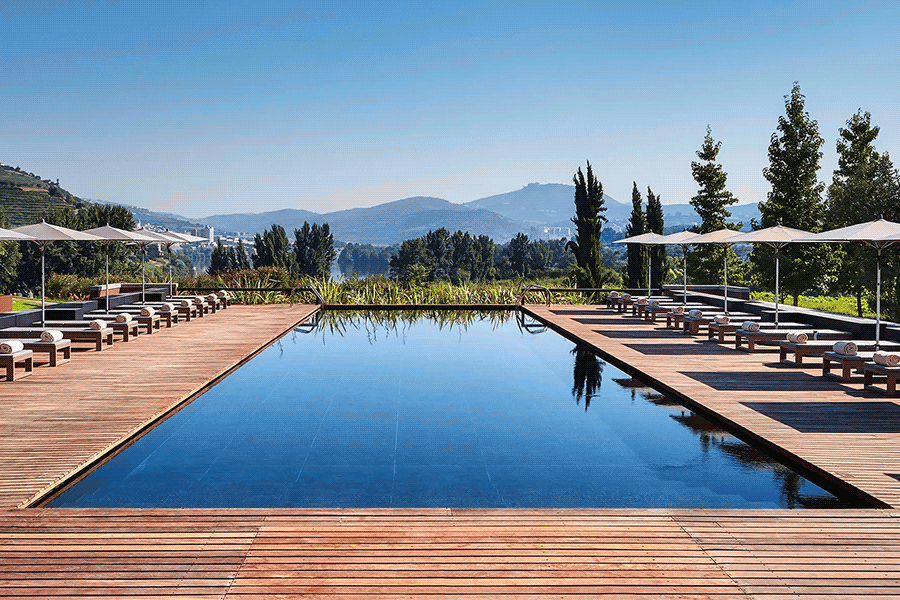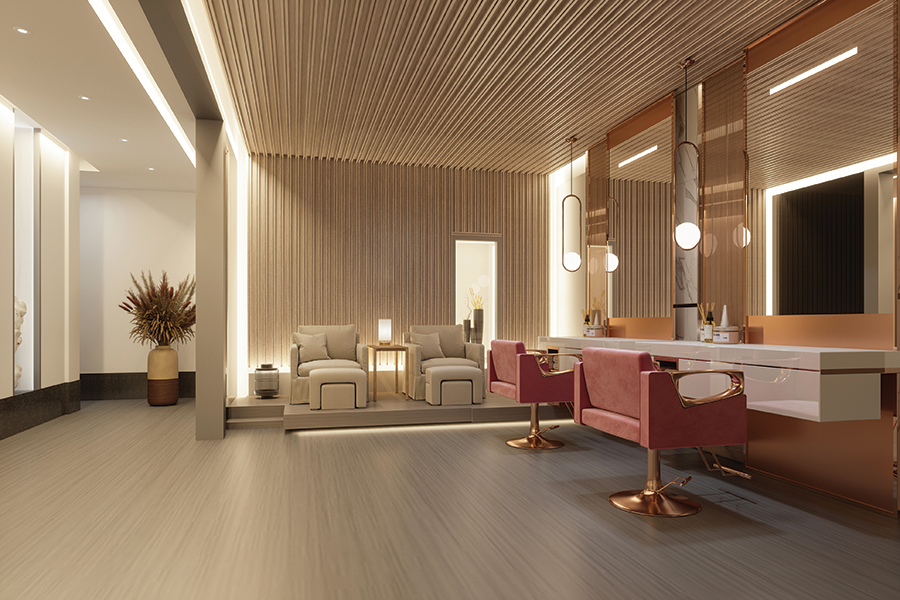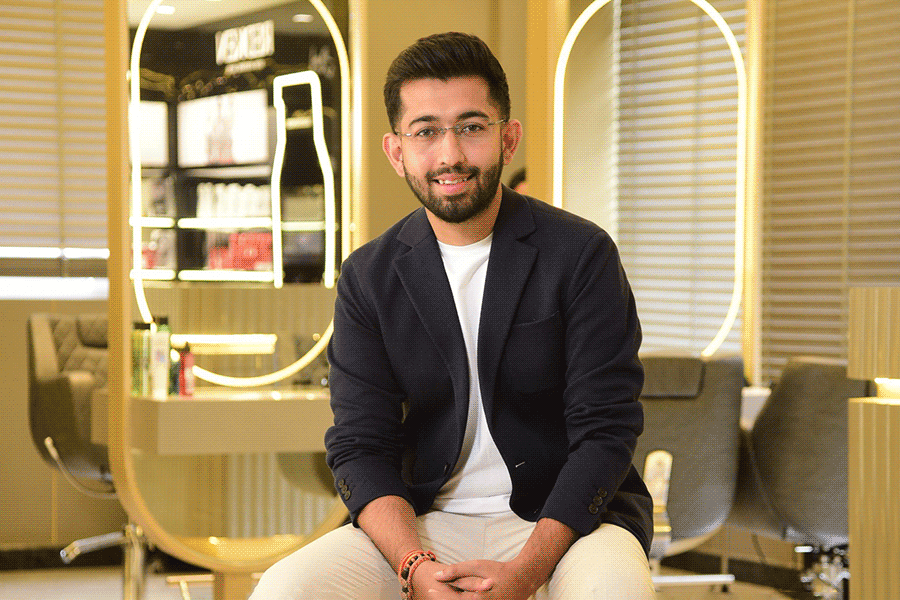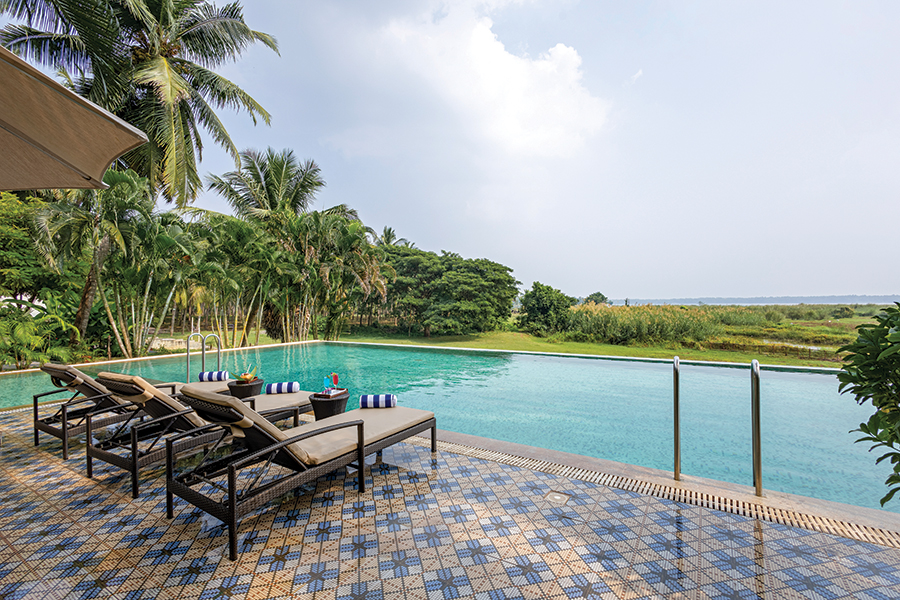From Aesthetic Luxury to Experiential Wellness
✔ Does the space instantly relax the senses?
✔ Does it improve air quality, reduce fatigue, and nourish the skin?
✔ Does it support sustainability while enhancing business profitability?
The best-designed wellness spaces of tomorrow will seamlessly integrate biophilia, air wellness, and intelligent design, not as afterthoughts, but as foundational principles of guest experience.
Biophilia: A Science-Backed Approach to Beauty & Wellness
Biophilic design is no longer a passing trend, it is becoming a core element of spa and salon architecture. Not just about adding plants; it involves creating an environment that interacts with human physiology on multiple levels:
✔ Circadian lighting that adjusts throughout the day, mimicking natural sunlight to enhance mood and skin health.
✔ Living walls and moss ceilings that purify indoor air, regulate humidity, and filter toxins from beauty products.
✔ Natural textures like bamboo flooring, raw silk robes, and stone basins that enhance sensory relaxation while reinforcing sustainability.
✔ Self-sustaining water features that increase humidity—critical for maintaining healthy skin and hair.
Aman Spa, New York
Aman Spa has redefined urban wellness by integrating biophilic lighting, oxygen-infused treatment rooms, and natural textures that subtly lower stress levels. By prioritizing environmental harmony, they offer guests a visceral, multi-sensory experience. Designed to work in harmony with the body, it creates an immersive and memorable experience.
Air Quality: The Next Defining Factor in Luxury Wellness
The unseen elements of a wellness space—air, light, and acoustics—are often the most influential. Many spas and salons unintentionally expose guests to chemical fumes from hair treatments, nail polishes, and synthetic materials, leading to fatigue, headaches, and skin irritation. Forward-thinking wellness spaces are now implementing:
✔ HEPA and activated carbon filtration systems to remove airborne toxins, hair particles, and chemical residues from beauty products.
✔ Essential oil ventilation systems that diffuse botanical extracts (such as lavender for relaxation or citrus for energy) without synthetic air fresheners.
✔ Moss walls, ivy, and ferns that naturally regulate humidity and improve air quality.
The Green Salon, Copenhagen
This pioneering salon became the world’s first certified chemical-free salon, integrating plant-based air purification, negative ion technology, and toxin-free materials. By eliminating harsh chemicals from both treatments and interiors, they have created a space where air quality enhances well-being rather than compromising it.
Smart Design: Where Technology Enhances Human Comfort
True innovation lies in how technology enhances relaxation, efficiency, and personalization in a spa or salon setting. The best technology is seamless—enhancing without overwhelming. Integrating smart design elements ensures that every detail contributes to an effortless and elevated experience:
✔ Adaptive lighting – that changes based on the time of day, treatment type, or even a client’s skin tone.
✔ Acoustic zoning – that separates tranquil spa areas from high-energy styling spaces, reducing noise fatigue.
✔ AI-powered smart mirrors – to assess skin hydration and elasticity, and hair health to personalize beauty treatments.
✔ Touchless technology—UV-sanitized tools, self-sterilizing massage beds etc. ensuring hygiene is built into the design rather than being an afterthought.
Four Seasons Sensei, Hawaii
This spa has AI-driven wellness consultations that analyse real-time biometric data, allowing guests to receive customized spa treatments tailored to their physical and emotional state. This level of personalization ensures maximum rejuvenation for a truly intelligent wellness experience.
Sustainability Drives Profitability
Not just a social responsibility, sustainability is a strategic business decision. Many wellness spaces unknowingly waste resources through excessive water usage, inefficient energy consumption, and frequently replaced high-maintenance materials.
Integration of sustainable solutions by spas and salons can significantly help reduce costs:
✔ Closed-loop water systems filter and reuse water without waste
✔ Sustainable materials e.g. bamboo, engineered stone, and mycelium-based alternatives offer durability with minimal environmental impact
✔ AI-driven energy management systems automatically adjust heating, cooling, and lighting to optimize efficiency and reduce operational costs
Six Senses Douro Valley, Portugal
A global leader in sustainable spa design, Six Senses has integrated all of the above sustainable solutions to minimise water wastage, reduce its environmental footprint and lower energy costs.
Spas that embrace sustainability see:
✔ Lower utility bills due to energy-efficient operations.
✔ Increased client loyalty as guests consciously choose brands aligned with their sustainability values.
✔ A future-proof business that stays ahead of industry regulations and consumer expectations.
About the author:
Reena Sheth, Founder of Gaiia, focuses on creating future-ready wellness experiences by blending biophilia, technology, and sustainable design. A LinkedIn Top Voice in Hospitality Management, she is recognized for her expertise across AI-driven wellness solutions and branding and workplace well-being.

